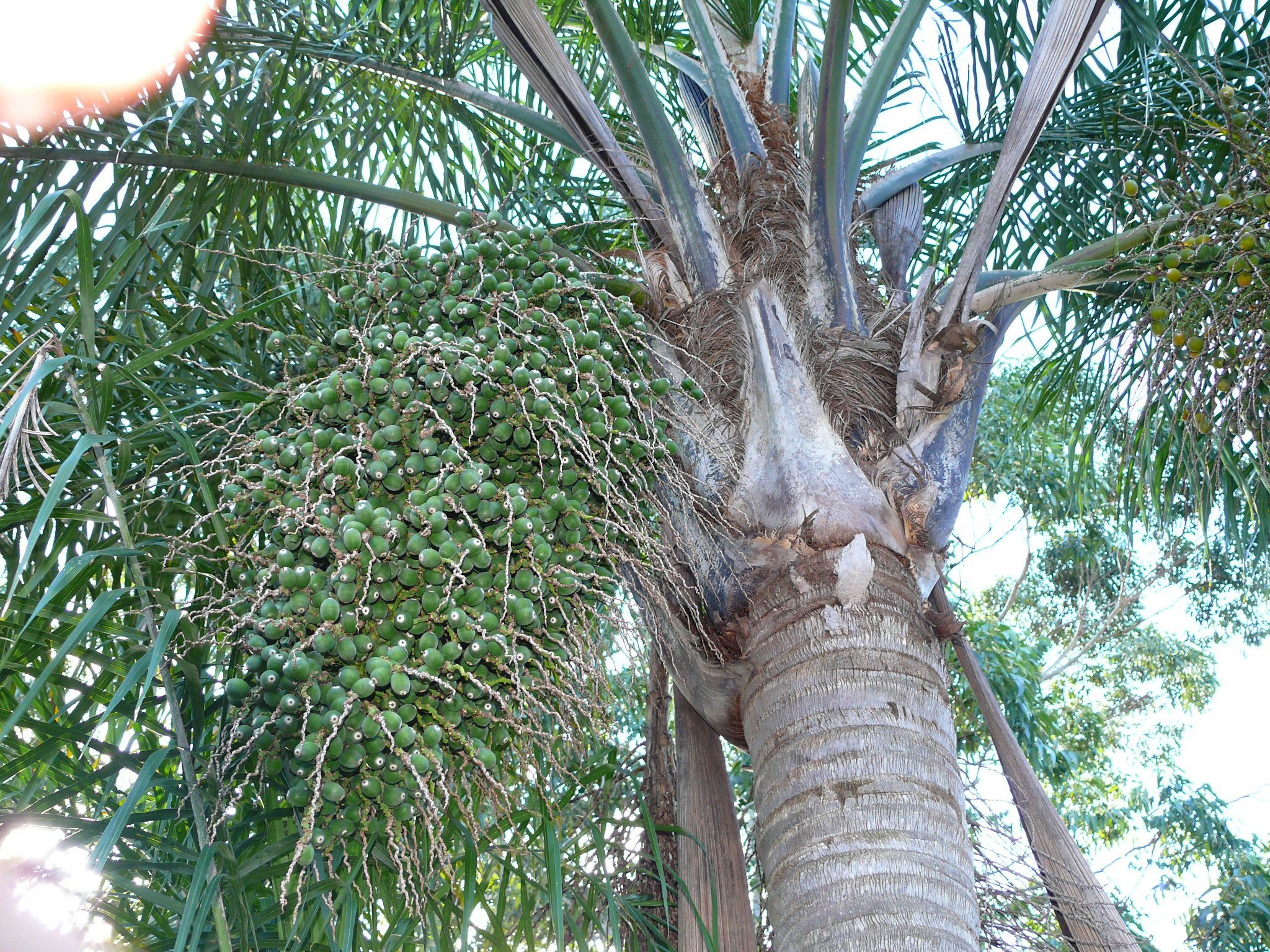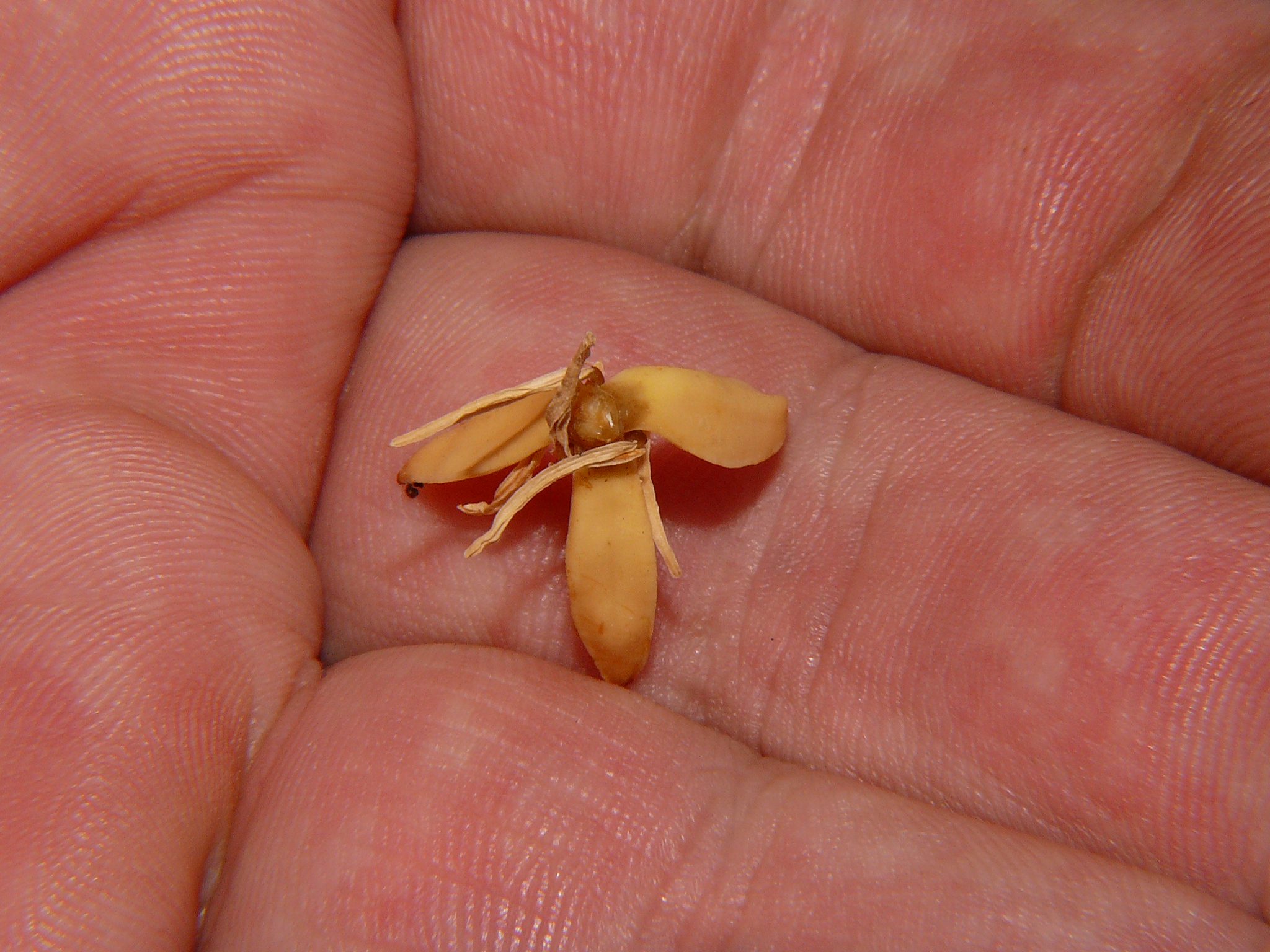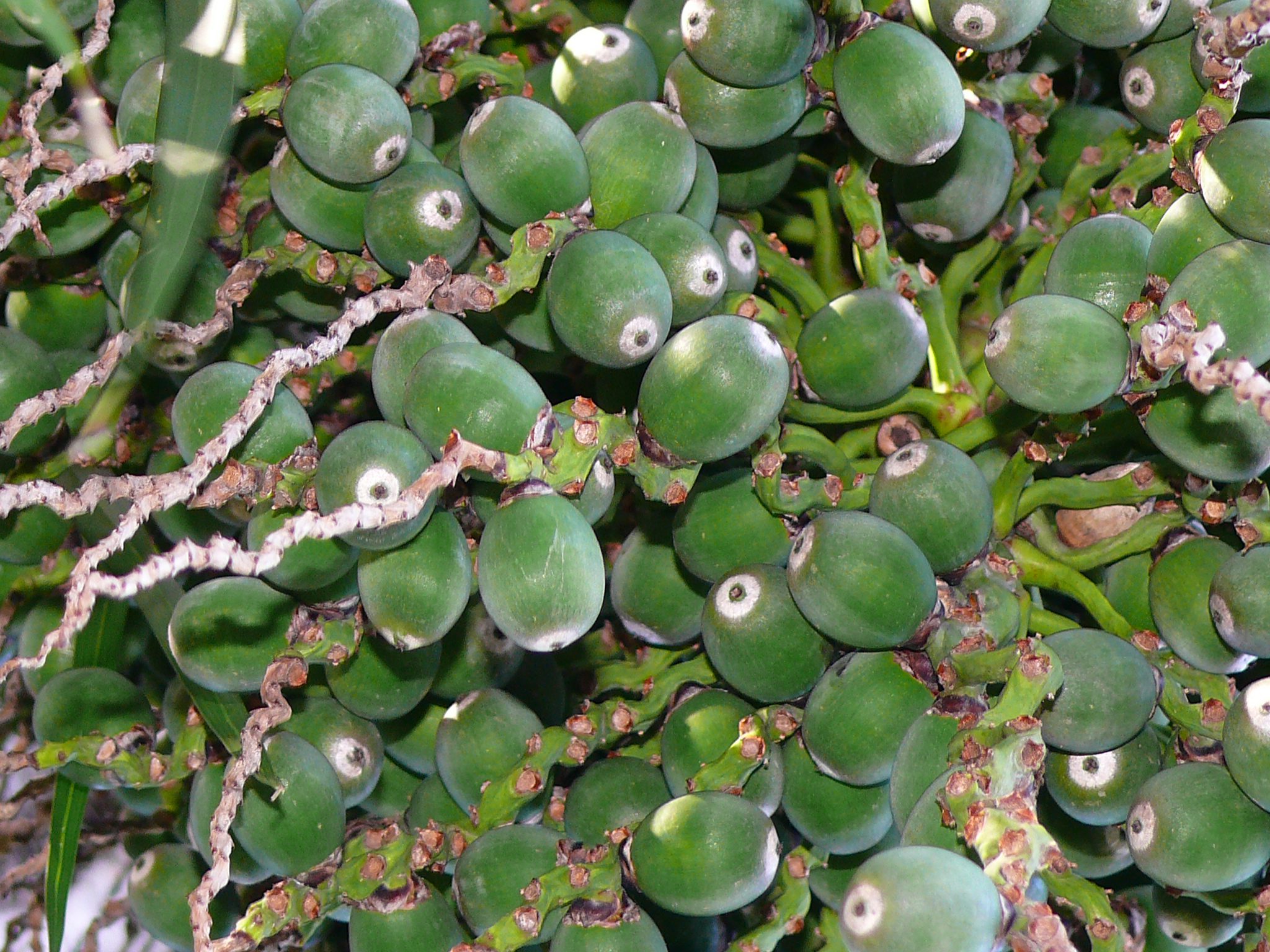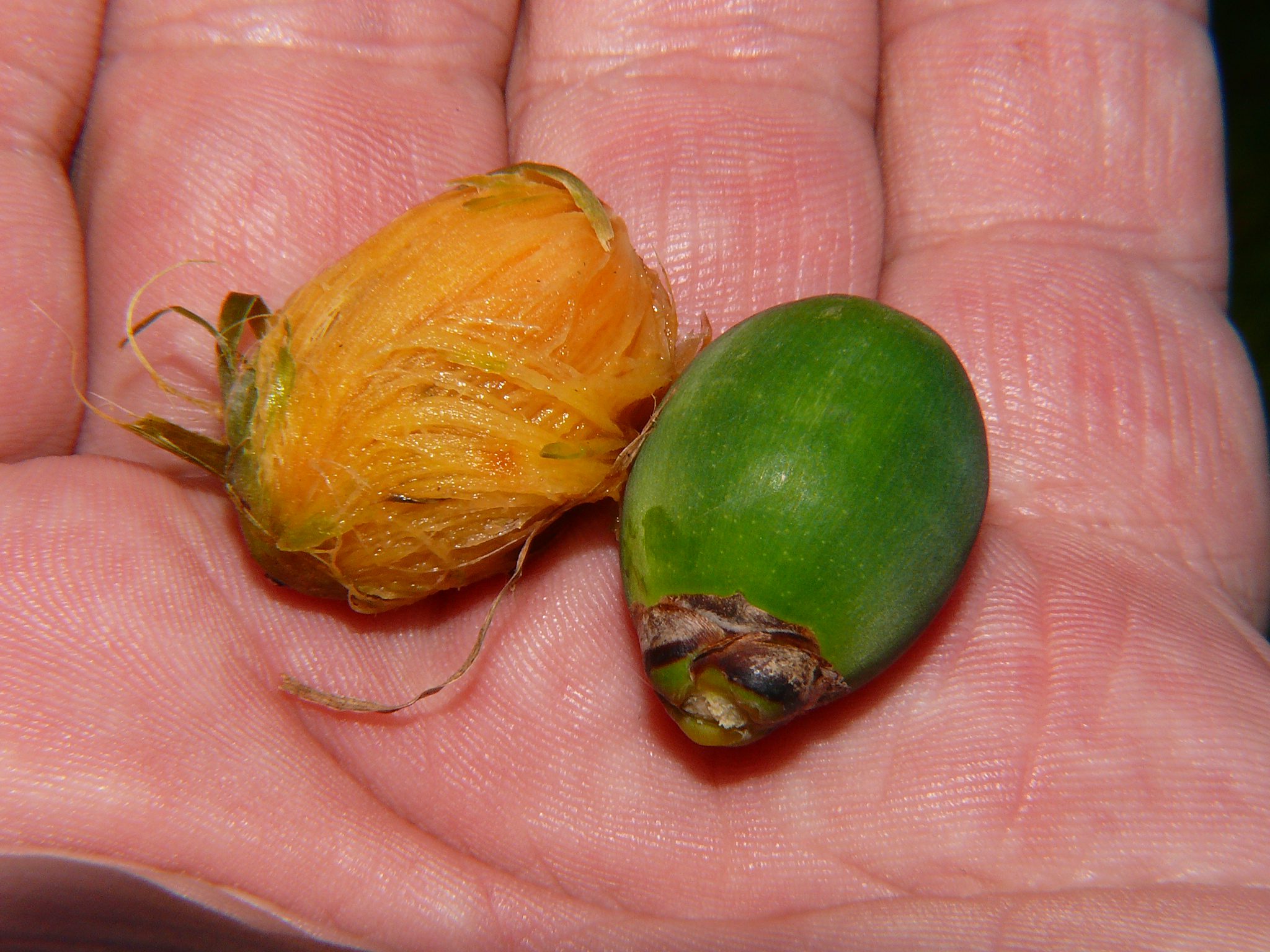Queen palm, cocus palm
Syagrus romanzoffiana, Fam. Arecaceae












Solitary palm to around 15m, with smooth grey trunk ringed with evenly spaced leaf scars and old persistent leaf bases, crowned with a large, dense canopy. Previously Arecastrum romanzoffianum, Cocos plumosa.
| Weed Category: |
Other invasive plants Invasive plants that are not prohibited or restricted invasive plants, but are known to spread readily and cause negative impacts, within the region.
|
| Weed: | Yes |
| Form or habit: | Palm or palm-like plant |
| Family: | Arecaceae |
| Leaf: | Compound Whorled Compound, whorled, feathery pinnate, up to 5m long, with double rows of leaflets to 1000 x 30mm radiating at different angles, green upper surface and greyish below; initially arching but drooping toward the ground with age. |
| Flower conspicuous: | Conspicuous |
| Flower colour: |
Yellow, Gold |
| Flower description: | Numerous yellow-gold, borne on many-branched axillary sprays, up to 2m long. |
| Fruit conspicuous: | Conspicuous |
| Fruit colour: |
Orange |
| Fruit: | Fleshy |
| Fruit description: | Bright orange fleshy fibrous fruit to 30mm, hang in heavy bunches to 2m long. Each fruit contains 1 fibre-covered, ‘monkey-faced nut’. |
| Habitat: | |
| Distribution | |
| Food source for: | |
| Toxicity: | No toxicity known |
| Origin: | Brazil |
| Notes: | Spread by: animals, especially bats; garden waste, water, contaminated soil and forest mulch. Invades/threats: creek banks, Melaleuca forest and wetlands. Notes: garden escapee. Has been widely used in landscaping though now often being removed due to large amount of messy fruit and large plant size. Fruit edible. Environmental weed. |
| Information sources: | Mackay Regional Pest Management Group (2018) Weeds of the Mackay Whitsunday Region Second Edition. |